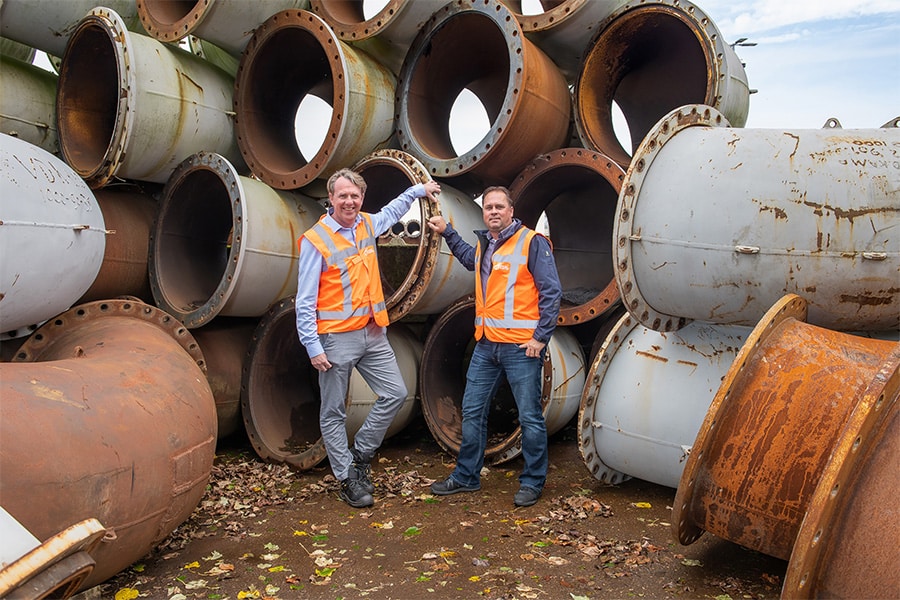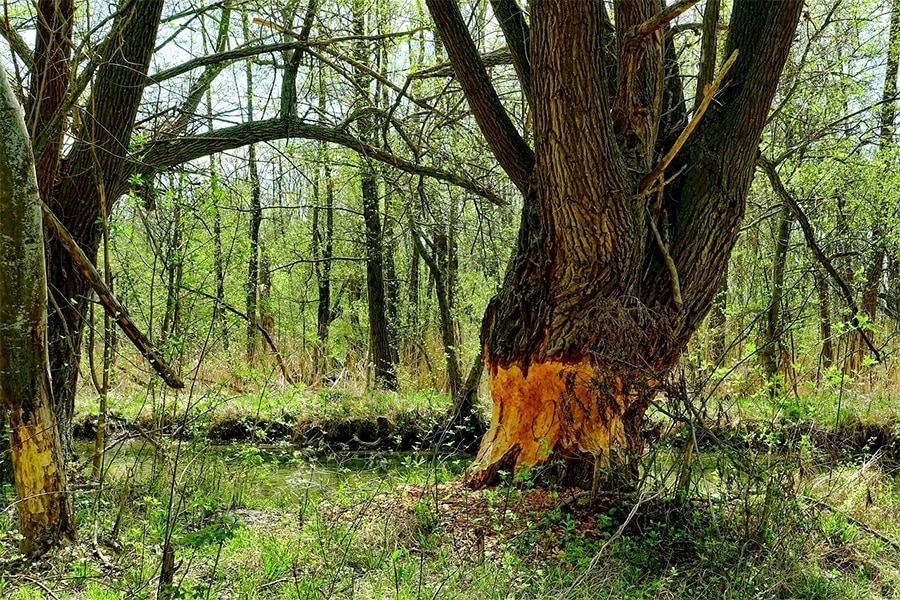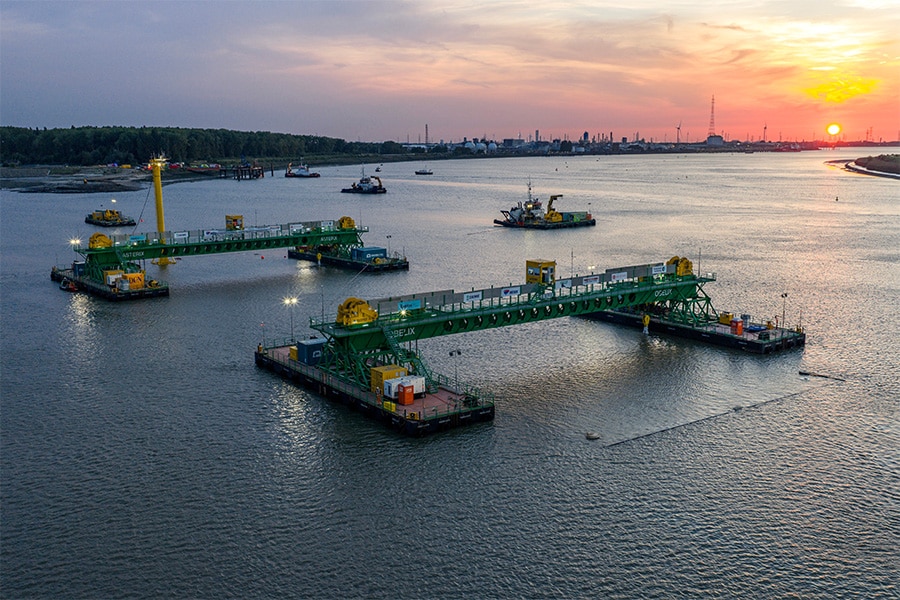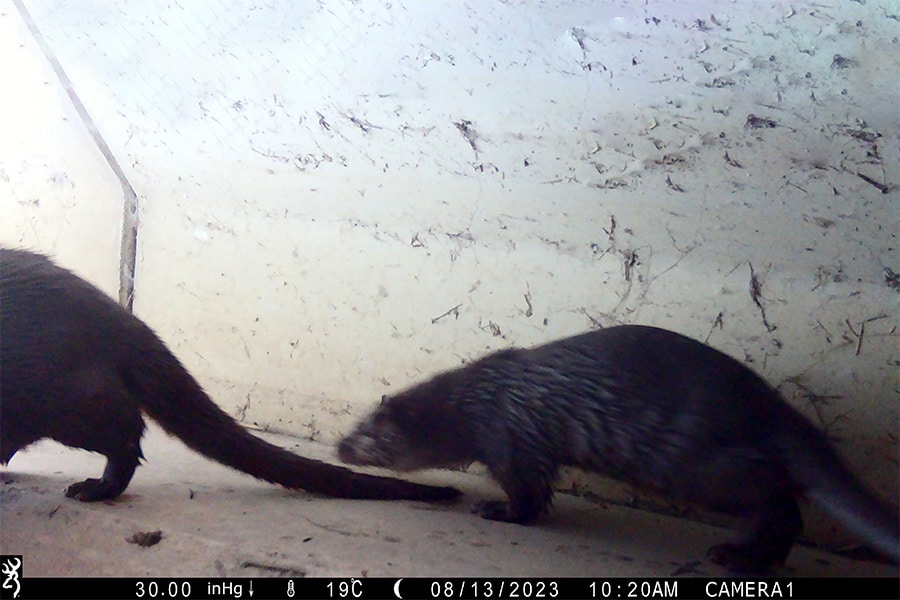
Zoutkamp pumping station also 'nature-inclusive'
The New Waterworks Zoutkamp project, with all its linking opportunities, not only increases water safety, but can also be a barrier to the passage of all kinds of animals. However, this is not the case with this complex; in fact, the new lock and pumping station complex is also nature-inclusive. Thanks to the expertise of Waardenburg Ecology, which provided the design team with advice regarding fish and otter passability, as well as the construction of a maternity roost for the catfish bat.
The new lock and pumping station complex will be a rather stony one, begins Jan Erik van der Heide, ecologist at Waardenburg Ecology. "To make it nature-inclusive, the necessary interventions will be made. For example, the Noorderzijlvest Water Board requires that the complex be fish passable all year round, a suitable otter passage must be constructed, as well as a maternity roost for the catfish bat. Given the nature of the complex, a fairly complicated puzzle. We have laid down a recommendation, which fulfills the ecological requirements in a practical manner, without incurring unnecessarily high costs. It typifies our working method."
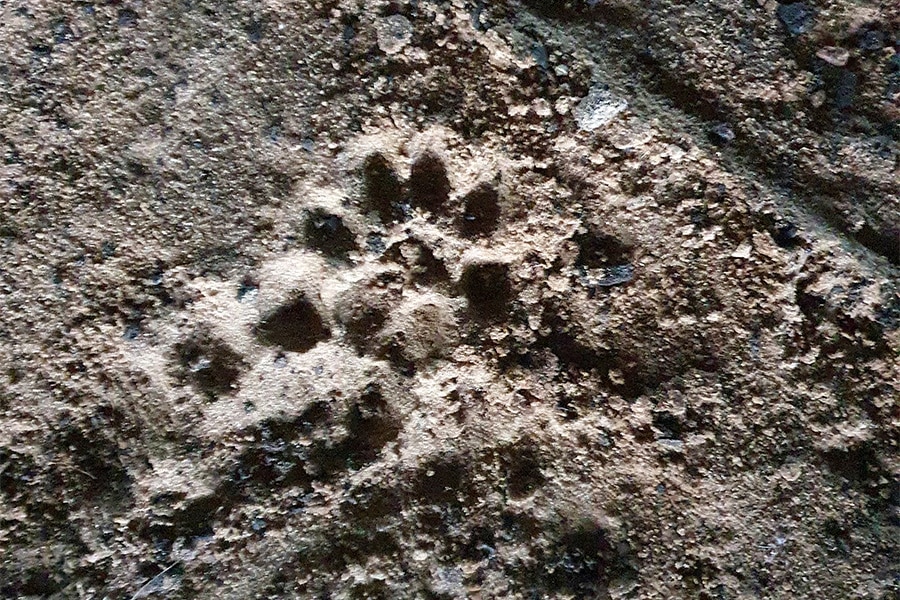
Fish passage
Waardenburg Ecology is the largest independent, ecological research and consultancy firm in the Netherlands with more than 150 specialists spread across locations in Culemborg, Haren (Groningen) and Nijmegen. "Internally, we worked with multiple divisions to flesh out passability for the various species," says Jan Erik. "The water board requires the complex to be fish-passable year-round for 100%. Especially the last 10% made the complex. To make that possible, the sluice gates of the lock should be open as much as possible. In that situation, there is no obstacle for fish to migrate. For the situation in which the doors are closed, two facilities are installed that enable migration of the desired target species. These are fish-friendly pumps and a Stork FishTrack Fish Passage 3.0. Furthermore, it is recommended that when the pumping station is running at half power, the pump farthest from the fish passage be turned on first."
Otter Passage
According to Jan Erik, the otter passage had already been partially worked out in the preliminary design. "We made the design concrete and took care of the exact detailing and sizing to ensure that otters will soon actually migrate through it. The passage combines a gangway through the pumping station that turns into a fauna tube. We also advised on the entire layout of the site around the passage, the slope and fencing. In addition, we advised on the maternity roost for the water bat. We called in a national expert to see how best to design this. We have almost all knowledge of ecology in-house, but for very specific issues we like to advise the top expert in their field, in order to come to the best advice together. From this we distilled three possibilities, describing the pros and cons and expressing our preference. Strukton adopted that advice."
Meanwhile, Strukton is in full swing. "During the breeding season we are on standby to quickly liaise with the competent authority and take management measures in the event of unexpected matters. That too is the added value of bringing in an ecological agency at an early stage," emphasizes Jan Erik, who further notes that Waardenburg Ecology also drew up the ecological work protocol and is currently conducting additional research into marten on the project.
